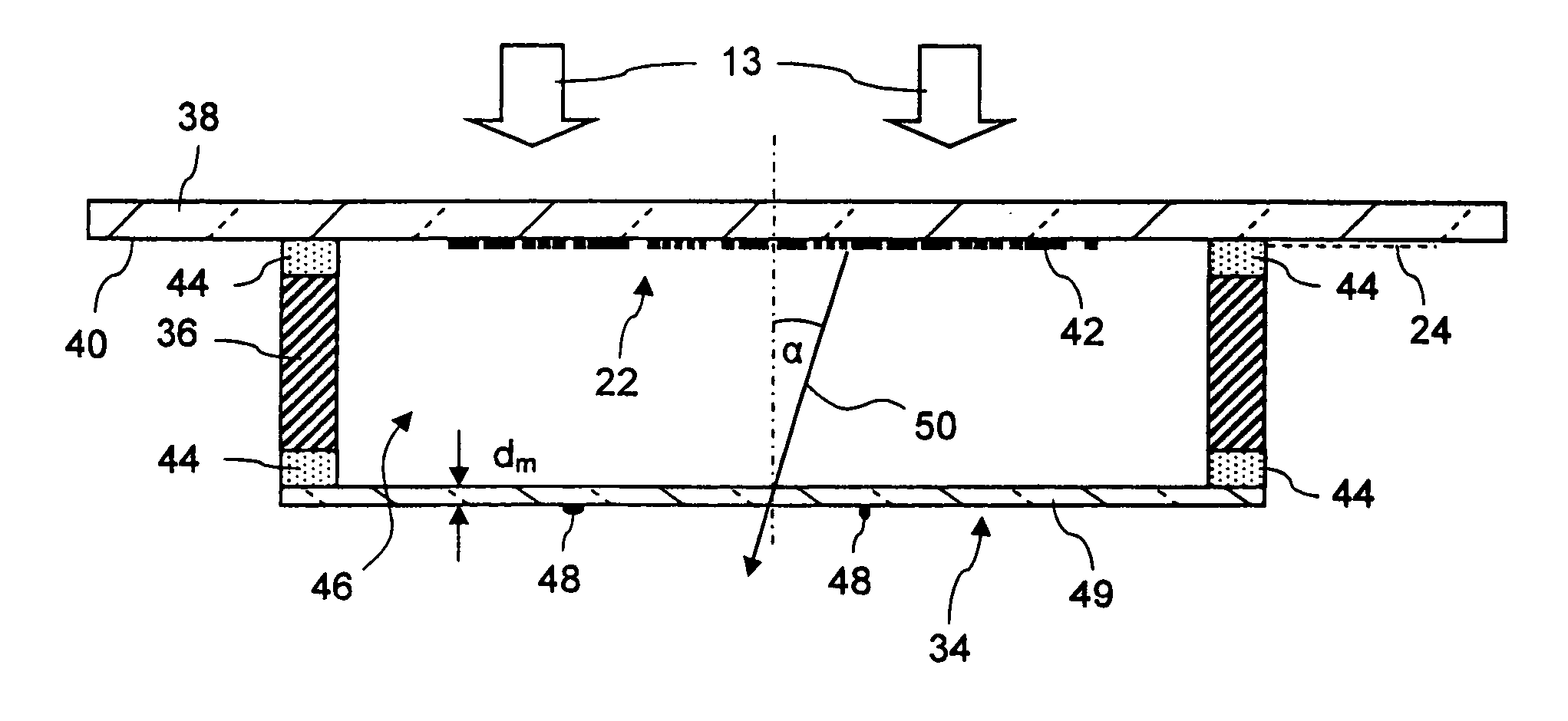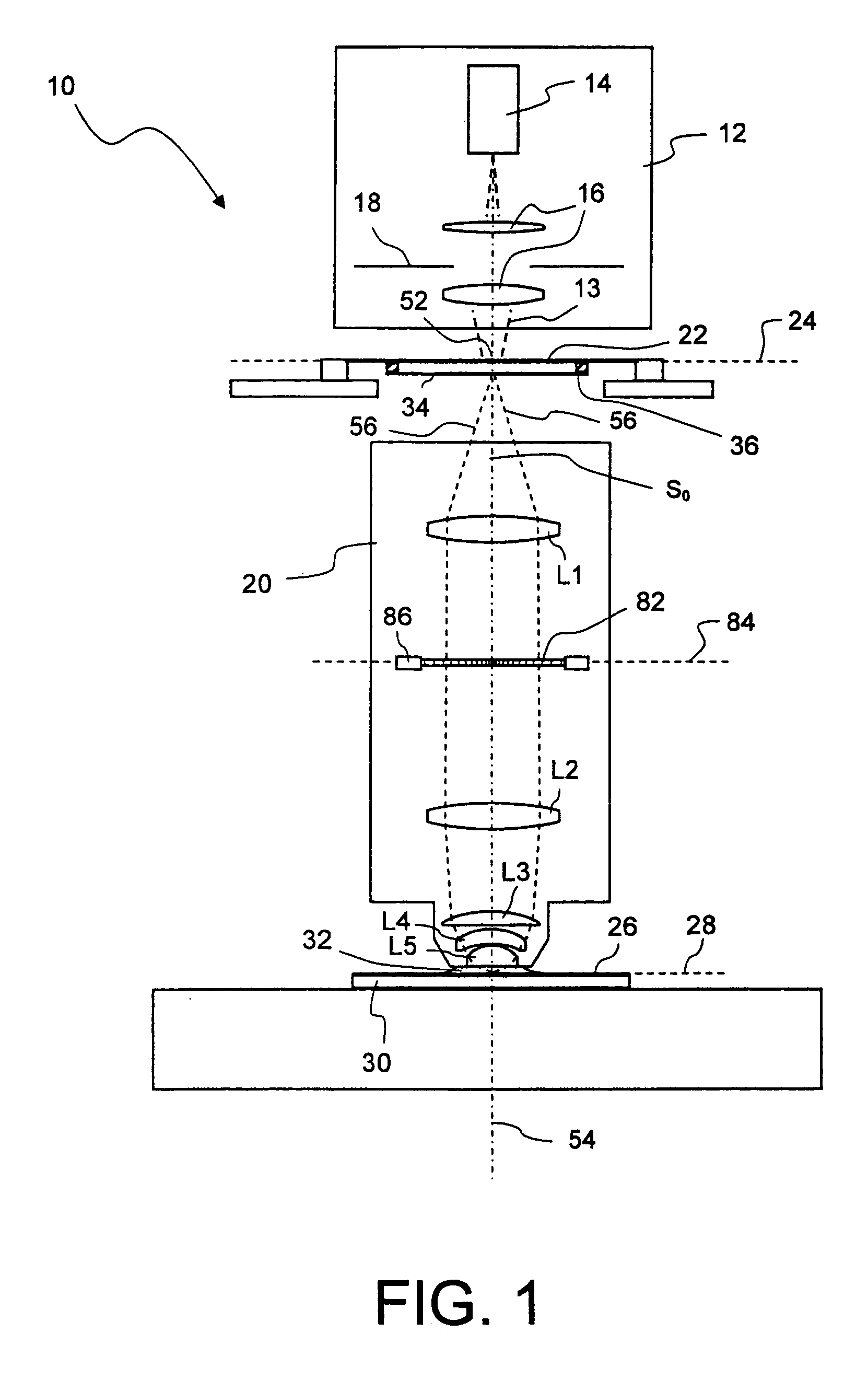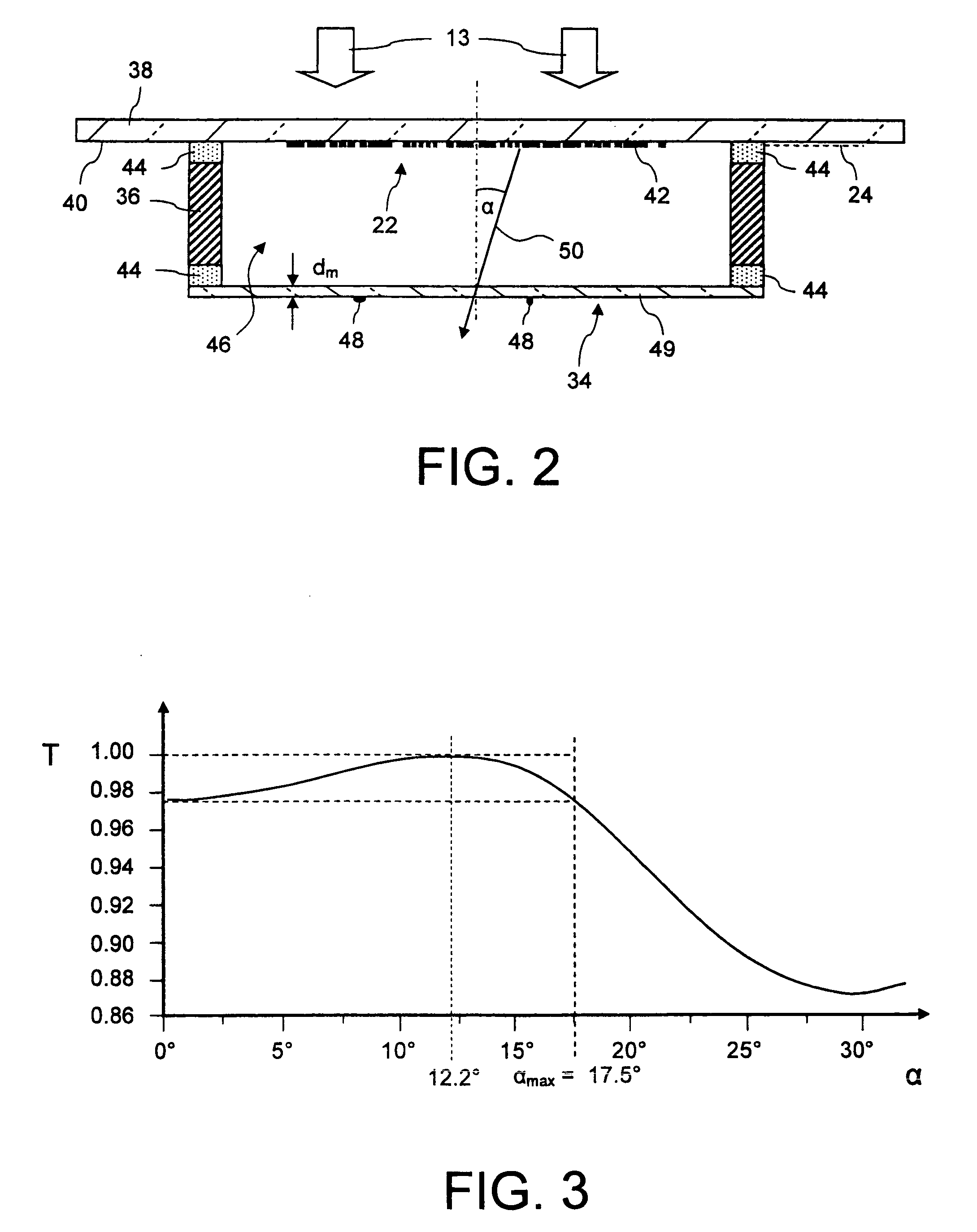Pellicle for use in a microlithographic exposure apparatus
a microlithographic and exposure apparatus technology, applied in the field of optical pellicles, can solve the problems of reducing affecting the quality of the image, and affecting the production efficiency of the component, so as to reduce the overall running cost of the projection exposure apparatus, reduce the overall running cost, and reduce the effect of li
- Summary
- Abstract
- Description
- Claims
- Application Information
AI Technical Summary
Benefits of technology
Problems solved by technology
Method used
Image
Examples
Embodiment Construction
[0044]FIG. 1 shows a meridional section through a microlithographic projection exposure apparatus in a highly simplified representation. The projection exposure apparatus, which is denoted in its entirety by 10, includes an illumination system 12 for generating projection light 13. The illumination system 12 has a light source 14, illumination optics indicated by 16 and a diaphragm 18. In the exemplary embodiment, the projection light has a wavelength of 193 nm. Of course, other wavelengths such as 157 nm or 248 nm, are contemplated as well.
[0045]The projection exposure apparatus 10 further includes a projection lens 20 containing a multiplicity of lens elements. For the sake of simplicity, only very few lens elements L1 to L5 are schematically indicated in FIG. 1. The projection lens 20 is used to image a mask 22 arranged in an object plane 24 of the projection lens 20 on a photoresist 26. In this embodiment the projection lens 20 has a magnification M=¼ so that the pattern formed ...
PUM
 Login to View More
Login to View More Abstract
Description
Claims
Application Information
 Login to View More
Login to View More - R&D
- Intellectual Property
- Life Sciences
- Materials
- Tech Scout
- Unparalleled Data Quality
- Higher Quality Content
- 60% Fewer Hallucinations
Browse by: Latest US Patents, China's latest patents, Technical Efficacy Thesaurus, Application Domain, Technology Topic, Popular Technical Reports.
© 2025 PatSnap. All rights reserved.Legal|Privacy policy|Modern Slavery Act Transparency Statement|Sitemap|About US| Contact US: help@patsnap.com



